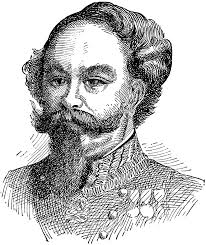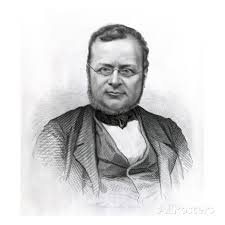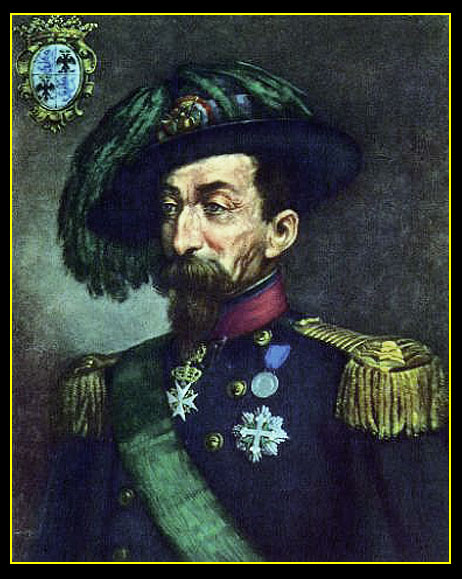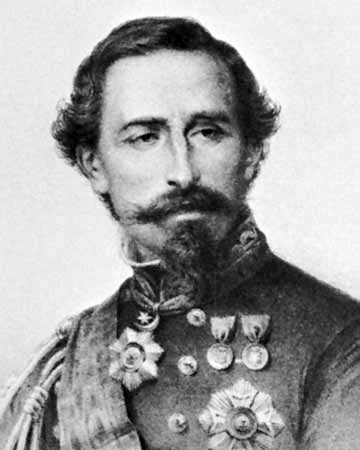
THE PIEDMONT RE-ALLIGNMENT
BY: TOM FRASCELLA OCTOBER 2014
The trans- European Carbonari revolts of 1848 largely failed to accomplish establishing democratically oriented national governments within the dozen or so countries effected. The one notable exception being France where the revolt succeeded and saw the Carbonari sympathizer Napoleon III installed as head of the new Republic in 1851. The revolts themselves generally unleashed new rounds of political suppression in the autocratic monarch based states of central and southern Europe where they failed.
The failure of the Carbonari revolt in a divided Italian peninsula where the movement had originated was largely the result of foreign interference from other European powers. European powers generally supported, out of self-interest, the 1,500 year status quo of Italian disunity. As previously written England’s intelligence aid to the Kingdom of the Two Sicilies assured the failure of the revolt in the southern Italy. Austria’s reassertion of pressure doomed the northern Italian states uprising and Napoleon III’s unexpected support and defense of the Papacy’s central Italian state finished the Carbonari republican drive altogether by 1851. Failure in all three regions drove the Italian Carbonari into hiding, prison or exile.
Within the “old guard/pre 1848” Carbonari, Napoleon’s support of the Papal State was particularly bitter and viewed as an outright betrayal of the cause. Napoleon had been nurtured in Italy and had joined the Italian Carbonari while in exile there. His betrayal left the Italian old guard Carbonari with little to do but languish in prison or lick their wounds in the various quarters where they had found some measure of safe haven. In Europe the new configuration of national governments consolidated their authority and a renewed European nationalism began to emerge.
As discussed previously, if England had expected to be rewarded for their aid by the Bourbon government then they were greatly disappointed when that did not happen. English foreign policy of the period would not support direct action against the Bourbon regime. However it was clear to Britain’s leadership that the sulfur trade needed to be secured. Opportunity left basically two foreign policy options for England to exploit. 1. Follow through on previous threats and support the Carbonari in Southern Italy or, 2. Support a friendly alternative Italian State government. Supporting the first policy while possibly attaining a change in government did not assure a change to a reliably friendly government. Supporting a well-established “alternative” friendly government had the advantage of stability and dependability. By 1852 British foreign policy toward southern Italy had clearly shifted to seeking a “friendly” Italian peninsula ally yet kept the revolution option open as well.
Where and how that ally arose is a complex mix of international and Byzantine Italian and British politics. As the Carbonari revolt began in Italy in 1848 its central leader was Giuseppe Mazzini a true supporter of non-monarch based democracy. However, the various regional Italian powers directed their rebellious 1848 actions in a somewhat autonomous manner. One notable example of the complexity was the treatment of Giuseppe Garibaldi on his return to Italy at the beginning of the revolt in 1848. Garibaldi who already was recognized as a Carbonari sympathizer was by 1848 also recognized a hero of the South American independence movement. Upon his return to Italy he first offered his military services to his home region of Piedmont-Sardinia. Piedmont-Sardinia was governed as a principality under King Carlo Alberto. The King saw the Carbonari revolt as an opportunity to act independently to free Piedmont-Sardinia from Austrian dominance, not as an opportunity for a unified Italy. He rejected Garibaldi’s assistance. The King did not trust Garibaldi’s democratic leanings. Garibaldi then joined the Carbonari forces of Mazzini. As the fractured revolt began to collapse and Austria reasserted its presence King Carlo Alberto was forced to sue for peace with Austria after his military defeat at the battle of Novara. The defeat almost cost the King his life as he was besieged by the citizens of Milan. He was saved by the actions of Major Alfonso La Marmora’s younger brother of Piedmont General Alessandro La Marmora founder of the Bersaglieri. As part of the negotiated peace treaty between Piedmont-Sardinia and Austria the King was forced to abdicate in favor of his son who was crowned Victor Emmanuel II in 1849. Prior to his abdication King Carlo Alberto promoted Alfonso La Marmora to the rank of General.
Victor Emmanuel II, who had served his father as a line officer in the rebellion came into his reign faced with certain political realities that were a consequence of his principalities loss to Austria. A weakened economy and army, debt and the continued Carbonari push for a unified republican Italy all weighed heavily on the young Monarch. Victor Emanuel II should be given credit for seeing opportunity where others saw defeat. It appears that he recognized that it was possible to seize control of the various factions in the divided peninsula but to start he needed to control the unity movement in his own region.
The city of Genoa was in 1849 a hot bed of Carbonari activity. When Piedmont sued for peace the City continued to press its independence not from Austria but from Piedmont regime. In what was a harbinger of acts to follow Victor Emmanuel II unleashed some 30,000 of his soldiers on the City of Genoa. The siege of Genoa by Piedmont forces that took place between April 5 and April 11, 1849 have become known as the “Sack of Genoa”.

Portrait Victor Emmanuel II
THE SACK OF GENOA
The City of Genoa had become a part of the principality of Piedmont only after the defeat of Napoleon in the 1820’s and the treaty that followed. Genoa did not consider itself a part of the Piedmont regional state by its history and looked to reestablish its own Republic of Genoa.. Attempting to take advantage of the chaos that followed the Piedmont defeat at Novara and the abdication of King Carlo the citizens of Genoa rebelled and declared themselves an independent republic.
The thirty thousand Piedmont troops sent to quell the Genoa revolt were commanded by General Alfonso La Marmora. These troops were made up primarily of Victor Emmanuel II best units the Bersaglieri. After several clashes General La Marmora set up artillery placements and began a seven day bombardment of the City. From the outset of the bombardment the Bersaglieri troops targeted civilian homes not military emplacements in clear violation of international custom. When the City was finally occupied the troops then went on a sanctioned rampage of civilian murder, rape and looting. Bersaglieri troops scoured the streets of Genoa shouting, “They do not deserve compassion, we must kill them all!” The civilian massacre was done with the full knowledge the military field commander. When the King became aware of the actions of his troops in the field Victor Emmanuel II decorated General La Marmora and issued a letter of commendation for his service.
The pattern of ruthless if not murderous suppression of opposition to the authority of Victor Emmanuel II, although largely hidden by the press of the day, would continue to be played out with disastrous consequences for southern Italy a decade or so later.
Victor Emmanuel II continued his internal consolidation of power and stayed on the sidelines when in 1851 the French defeated the Carbonari forces in central Italy. In response to the French victory over the Carbonari forces, blocked the Carbonari retreat northward. He also issued orders of arrest and execution of Carbonari leadership including Mazzini and Garibaldi. As a result Giuseppe Mazzini and others were forced into exile beyond Italy. Mazzini and others including Carlo de Rudio found sanctuary in England and Garibaldi in the United States.
In 1852 Victor Emmanuel II made one of his most fateful decisions and selected Count Camillo Benso, “Count of Cavour” as his Prime Minister. In 1853 European politics and the insertion of Russia in the Mediterranean Sea via the Crimea brought war to the continent once again. England, France and Turkey allied against Czarist Russia. Austria because of its proximity to Russia remained neutral in the conflict. The Crimean War raged on from 1853-1856.

Portrait of Count Camillo Benso, “Count Cavour”
It is broadly acknowledged that Count Cavour entered into the political mix just at a critical moment in modern Italian history. Specifically at the start of the Crimean War. A clear realignment of Piedmont international and regional politics starts to take place with his arrival on the scene. A full picture of the secret international discussions and negotiations that ensued will probably never be known, but unprecedented and curious events began to occur rapidly from this point on.
What Cavour and Victor Emmanuel realized was opportunity in the politics of the Crimean conflict. One would think that a small principality such as Piedmont-Sardinia had little to gain or lose in such a conflict. The theater of conflict was far removed from the northern Italian coast and Piedmont’s international trading relationships were not at risk. However, Victor Emmanuel saw in Austria’s neutrality an opportunity to dramatically ally with the interests of England and France. That opportunity would take shape in the later part of 1854. How long the Prime Minister Cavour and Victor Emmanuel plotted their course of action is unknown but one possible clue lies in the post-revolutionary travels of Giuseppe Garibaldi. Clearly Garibaldi was persona non grata in Piedmont during the Carbonari uprising 1848-1851. He was then forced into exile in the U.S. from 1851-1853. While in the U.S. he made his home in Rhode Island but spent much of the two years as a merchant sea Captain his pre-revolutionary occupation. During this two year period his merchant travels took him as far away as Australia and China. At least for some part of these two years Garibaldi contemplated permanent residence in the U.S. going so far as to begin the naturalization process. In the later part of 1853 however, he apparently got word that “all was forgiven” and he could return to Piedmont Sardinia. He travelled there as a merchant Captain stopping first in England where he was hailed as a hero and spent over a week before making his way to Piedmont in early 1854.
In Piedmont he not only was welcomed by the government but as a result of a “legacy” from his brother was able to purchase half of the island of Caprera which lies just north of Sardinia. He is said to have devoted himself thereafter to agriculture on his estate for the next two years. To what extent he may have been involved in other activities or why the Piedmont government suddenly no longer regarded him as a threat are oddly missing from the historical record.
However, also in 1854 the Piedmont government committed 20,000 Bersaglieri troops to fight in the Crimea peninsula on the side of the French and English. In essence Piedmont was committing 20,000 of their best soldiers to fight in a foreign war. There was absolutely no direct reason for Piedmont to become involved in this conflict. In fact the monetary cost alone would argue against entering a war where no trade or territorial issues were at stake for them. Nevertheless Piedmont did enter the war and committed what was essentially half of its most highly trained forces. The risk to the State was not unknown and King Victor Emmanuel II placed Alessandro La Marmora in charge of revamping Piedmont’s forces prior to foreign deployment in 1855. To be sure this action cost Piedmont dearly as its forces suffered 10,000 casualties during their brief two year appearance on the Crimean front. Among the losses was General Alessandro La Marmora who died in Crimea at Balaklava of cholera. Thereafter his younger brother Alfonso took command of the Piedmont Crimean forces. The Piedmont force’s appearance in the War on the side of the victorious allies did endear the Piedmont government to the British and French governments. It also gave them a minor place in Paris at the Peace treaty table.
However the most significant accomplishment by the Piedmont government by their actions in Crimea was to emerge in the British and French political circle as a stable, trustworthy and committed ally on the Italian peninsula. This was truly a masterful political stroke on Piedmont’s part and turned them from an Austrian defeated, minor principality in 1849 to a player on the British and French international scene by 1856.
Probably the most intriguing aspect of the above mentioned events is the role or lack thereof of the Carbonari. Garibaldi was clearly being held close for some future role by the piedmont government, but other Carbonari, especially in England and France, including Mazzini, seem to be out of the loop.


General Alessandro La Marmora General Alfonso La Marmora
© San Felese Society of New Jersey